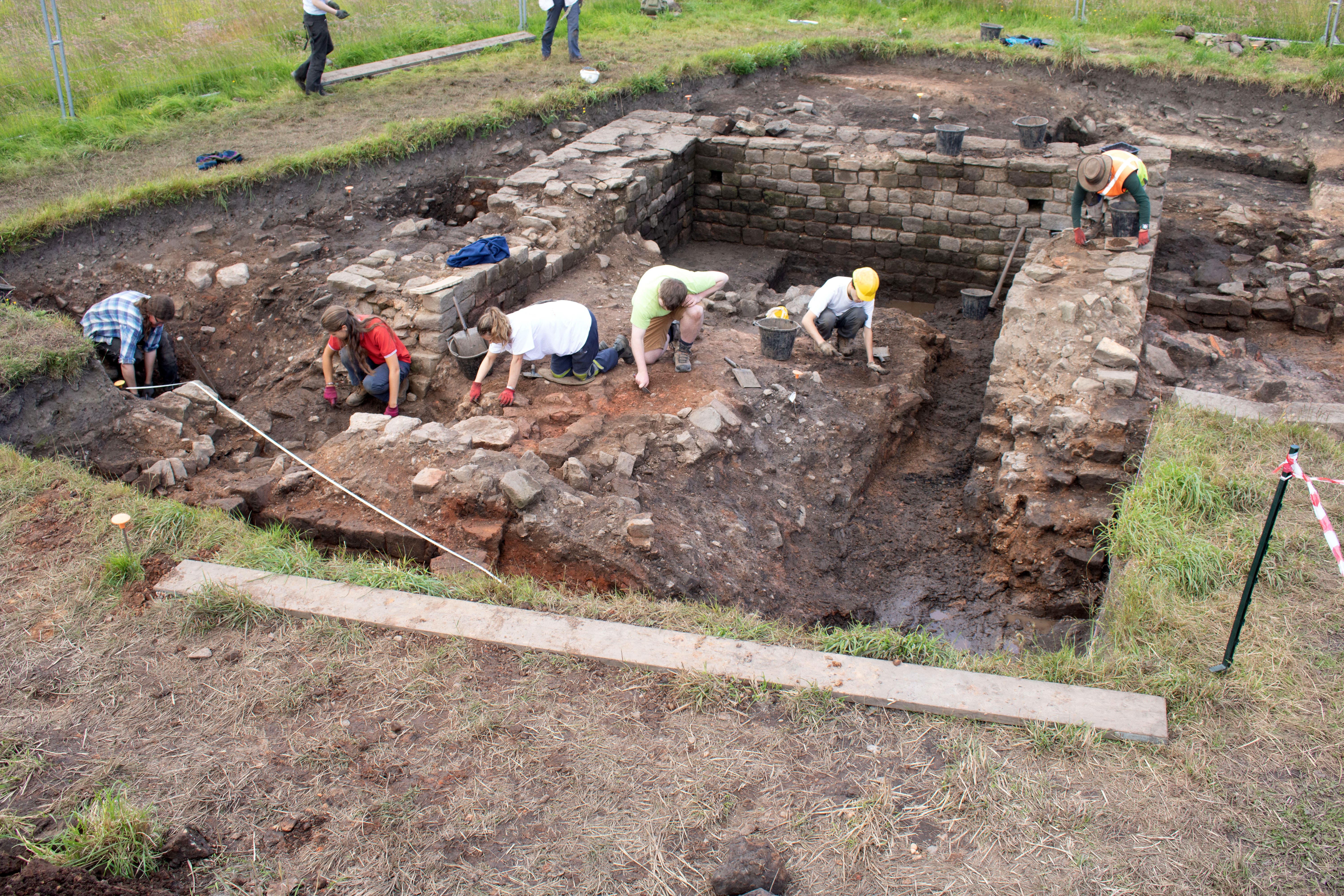Biggest dig for 30 years aims to reveal more secrets of Hadrian’s Wall
A five-year excavation programme is taking place at the Birdoswald fort in Cumbria.

The biggest archaeological dig on a section of Hadrian’s Wall since the 1990s is continuing and experts hope it will reveal more secrets of life on a northern outpost of the Roman Empire.
Historic England and Newcastle University are running a five-year excavation programme at the Birdoswald fort, Cumbria, which is part of the Hadrian’s Wall World Heritage Site.
The current project is examining houses, communal buildings and workplaces beyond the fort walls – giving researchers a glimpse of frontier life for people living beside the military base.
Since the five-year project began in 2021, more than 200 archaeology students will have joined the dig, using the latest high-tech equipment.
To the east, work will continue on a well-preserved bathhouse, first discovered in 2021.
The area to the west has never before been explored, with data from geophysical surveys hinting there was once an open area surrounded by structures.
It is hoped the summer’s work will give more answers about its significance.
And to the north, a large expanse will be systematically examined.
Findings to date suggest that the settlement beyond the fort walls was carefully planned, and that specific activities related to everyday life took place in designated zones.
Rather than being a shanty town on the edge of the fort, experts believe the settlement outside the wall shows people had confidence in their security living beside the fortifications.
Tony Wilmott, Historic England senior archaeologist and project co-director said: “One of the strengths of this project is that the military area within the fort was excavated extensively with modern techniques in recent decades, so the evidence we’re gathering right now outside the walls can be directly compared.
“This means that Birdoswald is incredibly well-placed to provide insights into the relationship between civilian and military life on the Roman frontier.”
Ian Haynes, Newcastle University professor of archaeology and project co-director said: “The archaeology (at) Birdoswald always has something surprising to teach us. Our staff and students are in for what will be a career highlight this summer.”
Visitors to the English Heritage site of Birdoswald are able to view ongoing excavation until July 7 by booking free guided tours.
Subscribe to Independent Premium to bookmark this article
Want to bookmark your favourite articles and stories to read or reference later? Start your Independent Premium subscription today.
